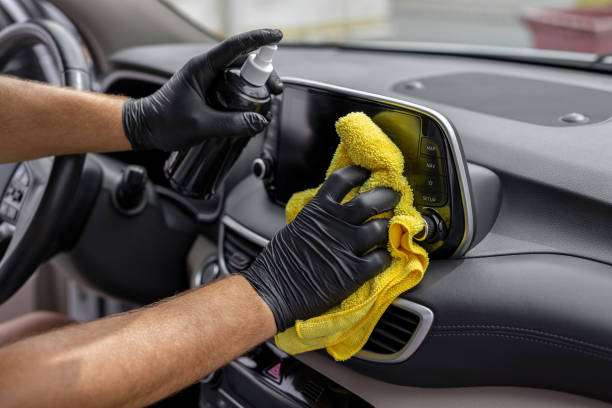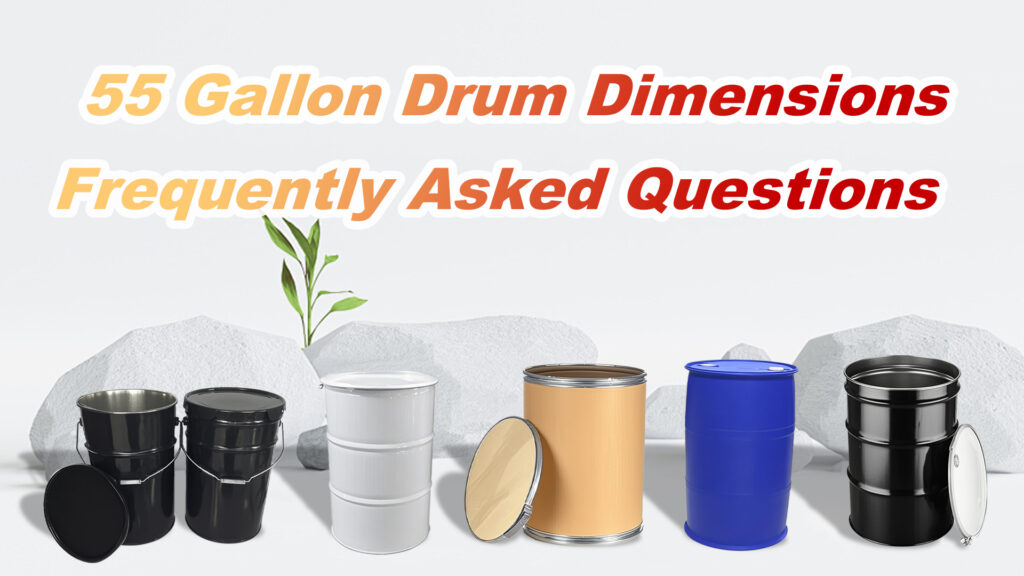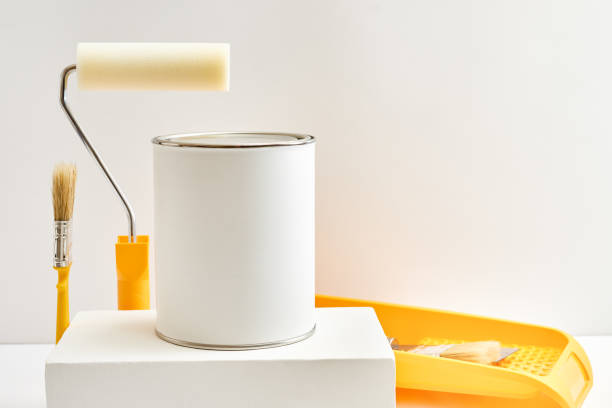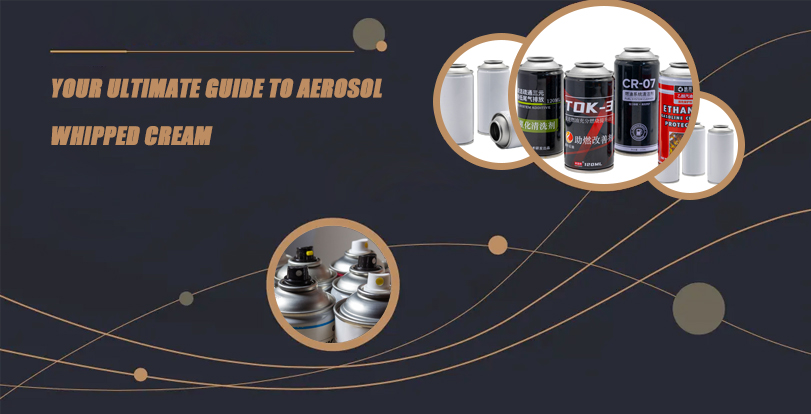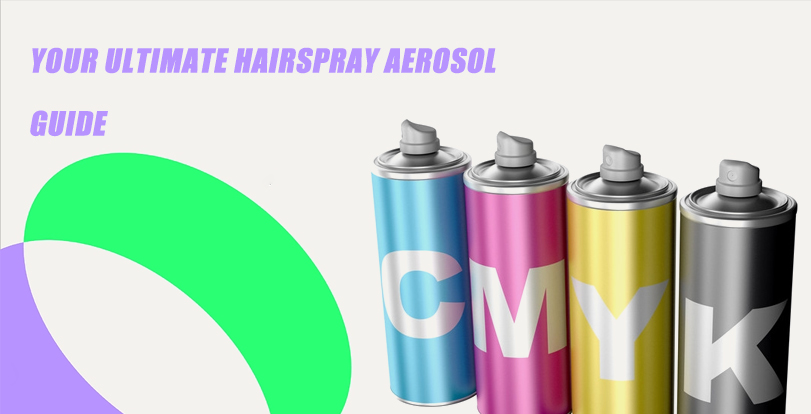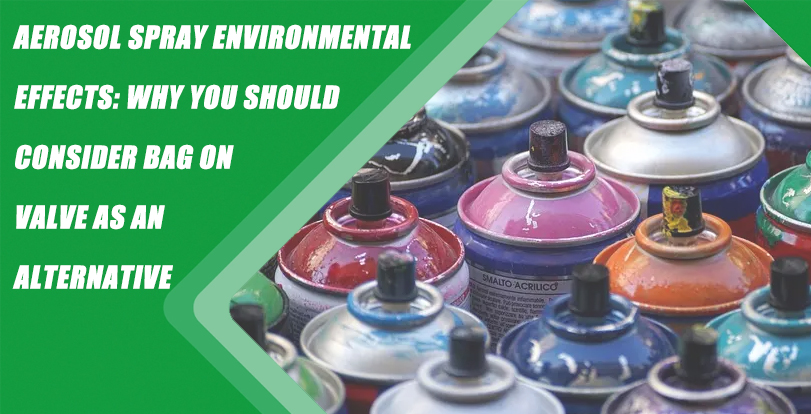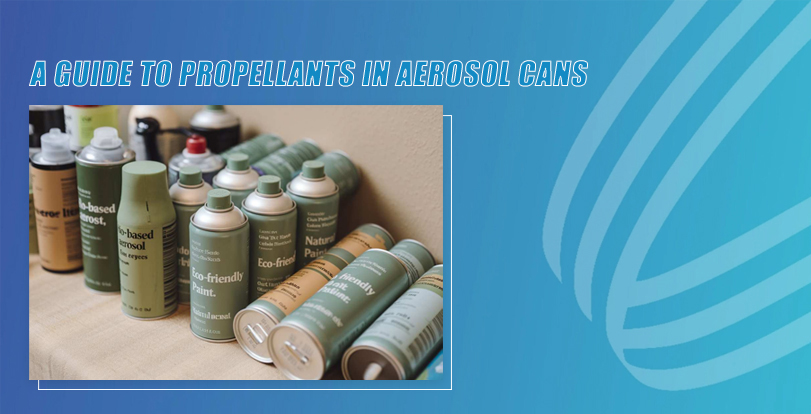Let’s face it, keeping your car clean can feel like a constant battle. Between daily commutes, road trips, coffee spills, muddy shoes, and unexpected bird greetings, your vehicle goes through a lot. You want it to look its best, both inside and out, but you don’t always have hours to spend on a full detail. That’s where the magic of car aerosol cleaners comes in.
These handy cans offer a quick, handig, and often surprisingly effective way to tackle specific cleaning tasks. But with so many different types on the shelf, how do you know which one to use? Are they safe? How do you get the best results?
Relax, you’ve come to the right place. This guide is designed to be your go-to resource for everything related to car aerosol cleaners. We’ll break down the different types, explain how to use them properly and safely, help you choose the right products for your needs, and answer those nagging questions you might have. Think of this as your personal car care aerosol encyclopedia!
What Exactly Are Car Aerosol Cleaners?
At their core, aerosol cleaners are cleaning solutions packaged in a pressurized can with a propellant. When you press the nozzle, the pressure forces the product out in a fine mist or foam. This delivery system offers several advantages:
- Gemak: No mixing required. Just shake, point, and spray.
- Speed: Application is incredibly fast.
- Targeted Application: Allows you to apply the cleaner precisely where it’s needed, minimizing waste and overspray (usually!).
- Reach: The spray can often reach into nooks, crannies, and vents that are difficult to access with cloths or bottles.
- Specific Formulations: Each aerosol is typically designed for a specific task or surface, ensuring the chemical composition is suitable for the job.
Why Bother With Aerosols? Aren’t Soap and Water Enough?
While a good old-fashioned wash is essential, aerosol cleaners excel at targeted cleaning and specific problems that soap and water might not handle effectively or efficiently.
- Interior Detailing: Quickly wipe down dashboards, clean upholstery spots, or eliminate odors.
- Tough Exterior Grime: Tackle baked-on bug splatters, stubborn tar, or heavy brake dust on wheels.
- Quick Touch-Ups: Maintain that just-washed look between full washes with quick detailer sprays.
- Specialized Tasks: Clean delicate electronics, degrease engine components, or lubricate parts.
Think of them as specialized tools in your car cleaning arsenal, ready to deploy when you need a quick fix or a focused attack on grime.
Types of Car Aerosol Cleaners
Let’s explore the most common types of aerosol cleaners you’ll find for your car, covering both the interior and exterior, and even some maintenance tasks.
1. Interior Aerosol Cleaners
Your car’s interior is your personal space on wheels. Keeping it clean makes driving more pleasant and helps maintain the vehicle’s value.
-
Dashboard & Trim Cleaner/Protectant:
- What it does: Cleans dust, fingerprints, and light grime from plastic, vinyl, and sometimes rubber surfaces. Many formulas also contain UV protectants to prevent fading and cracking caused by sunlight. They can leave a matte, satin, or glossy finish depending on the product.
- How to use: Shake the can well. It’s often best to spray directly onto a clean microfiber cloth rather than the dashboard itself, especially around sensitive electronics or vents. Wipe the surface evenly. For protectant properties, you might need to let it sit for a moment before buffing lightly with a separate clean cloth.
- Voordelen: Quick cleaning, UV protection, restores appearance.
- Considerations: Choose a finish you like (mat vers. shiny). Avoid spraying directly onto screens, instrument clusters, or steering wheels where slipperiness could be an issue. Test in an inconspicuous area first.
-
Upholstery & Carpet Cleaner:
- What it does: Formulated to lift stains, spills, and ground-in dirt from fabric seats, carpets, and floor mats. They often come out as a foam that penetrates fibers.
- How to use: Shake well. Spray evenly onto the stained or soiled area. Follow the product instructions – some require immediate scrubbing with a brush or cloth, while others need to dwell for a few minutes to break down the stain. Agitate the area gently with a soft brush. Blot the area thoroughly with a clean, absorbent cloth (don’t rub aggressively, as this can spread the stain or damage fibers). Repeat if necessary. Allow the area to air dry completely, vacuuming afterwards can help restore the pile.
- Voordelen: Effective spot cleaning, tackles common spills (koffie, soda, food).
- Considerations: Test on a hidden area first to check for colorfastness. Not suitable for leather or suede (use dedicated leather cleaners). Ensure good ventilation as fumes can be strong. Don’t saturate the area, as excessive moisture can lead to mold or mildew.
-
Glass Cleaner:
- What it does: Designed specifically for automotive glass (which can be different from household glass). These cleaners cut through haze, fingerprints, smoker’s film, and grime without leaving streaks. Many are ammonia-free to protect window tint.
- How to use: Shake the can. Spray lightly onto the glass surface. Wipe immediately with a clean, lint-free microfiber towel (a waffle-weave glass towel works best). Flip the towel to a dry side or use a second clean towel for a final buff to ensure a streak-free finish.
- Voordelen: Streak-free clarity, removes tough film and haze.
- Considerations: Use dedicated auto glass cleaner, not household versions which might contain ammonia harmful to tint. Avoid spraying on surrounding plastic or upholstery.
-
Air Freshener & Odor Eliminator:
- What it does: These aren’t strictly “cleaners,” but they address olfactory cleanliness! Some simply mask odors with fragrance, while better ones contain enzymes or chemicals designed to neutralize odor-causing molecules (from smoke, pets, food, mildew, enz.).
- How to use: Shake well. Spray lightly into the cabin air, often aiming towards carpets and upholstery where odors linger. Some specific odor eliminators might instruct you to spray into the AC intake vents (check instructions carefully).
- Voordelen: Improves cabin ambiance, eliminates unpleasant smells.
- Considerations: Choose scents you enjoy. For persistent odors, find the source and clean it first. Odor eliminators are generally more effective than simple fresheners. Be cautious if you or passengers have scent sensitivities.
-
AC System Cleaner & Refresher:
- What it does: Designed to clean mold, mildew, and bacteria that can build up in your car’s air conditioning evaporator core and ductwork, causing musty smells. They often come with a long tube for application.
- How to use: This requires following product instructions very carefully. Typically involves turning the AC on a specific setting (Bijv., max cool, fresh air intake), inserting the application tube deep into vents or a specific AC drain tube location, and dispensing the product (often a foam). The foam cleans as it breaks down and drains away. Let the system run as directed, then air out the car.
- Voordelen: Eliminates musty AC odors at the source.
- Considerations: Read and follow instructions precisely. Requires a bit more effort than a simple spray. If unsure, consult a mechanic. Good ventilation is essential during and after use.
2. Exterior Aerosol Cleaners
Keeping the outside of your car looking sharp is just as important. Aerosols can help with specific, stubborn external issues.
-
Tire Shine/Dressing:
- What it does: Restores the deep black look to tires and often adds a layer of protection against UV rays and browning. Comes in various finishes, from matte to high gloss.
- How to use: Ensure tires are clean and dry first. Shake the can well. Spray evenly onto the tire sidewall (avoid the tread!). Hold the can a few inches away and use a sweeping motion. Some formulas are “spray and walk away,” while others benefit from being wiped with an applicator pad for a more even finish and to remove excess product (preventing “sling” onto your paintwork).
- Voordelen: Enhances appearance, provides some protection.
- Considerations: Choose your desired finish (glanzend, satin, mat). Avoid getting it on the tire tread (reduces traction) or brakes. Wipe off any overspray from wheels or paint immediately. Water-based formulas tend to sling less than silicone-based ones but may not last as long.
-
Wheel Cleaner:
- What it does: Formulated to break down stubborn brake dust, road grime, and dirt that accumulates on wheels. Different formulas exist for different wheel types (Bijv., clear-coated, polished aluminum, chrome).
- How to use: Use on cool, dry wheels out of direct sunlight. Shake well. Spray liberally onto the wheel surface. Let it dwell for the time specified on the label (usually 30 seconds to a few minutes) – you might see the cleaner changing color as it reacts with brake dust. Use a soft wheel brush or mitt to agitate stubborn areas, especially around lug nuts and spokes. Rinse thoroughly with a strong stream of water.
- Voordelen: Effectively removes baked-on brake dust.
- Considerations: Crucial: Use a cleaner safe for your specific wheel finish! Acidic cleaners are powerful but can damage sensitive finishes (like polished aluminum or aftermarket wheels) if misused or left on too long. pH-neutral cleaners are generally safer. Always rinse thoroughly. Avoid spraying on brake components if possible.
-
Bug & Tar Remover:
- What it does: Contains solvents designed to soften and dissolve dried-on insect remains and sticky tar spots, making them easier to wipe away without excessive scrubbing (which can scratch paint).
- How to use: Apply directly to the affected spots on your paintwork, grille, or windshield (ensure it’s safe for the surface per instructions). Let the product dwell for the recommended time (usually 30-60 seconds) to allow it to penetrate. Gently wipe away the softened residue with a clean microfiber cloth. Wash the area afterwards or rinse thoroughly.
- Voordelen: Safely removes stubborn contaminants.
- Considerations: Use only on affected areas. Don’t let it dry on the surface. Test in an inconspicuous area first, especially on plastics or older paint. Wash the area after treatment.
-
Quick Detailer Spray:
- What it does: A versatile product used between washes to remove light dust, fingerprints, water spots, and bird droppings. It adds gloss and lubricity, making wiping safer for the paint. Some contain wax or polymers for added protection.
- How to use: Shake well. Mist lightly onto a small section of the paintwork (best used on a relatively cool surface out of direct sun). Gently wipe the product and dirt away with a clean, plush microfiber towel, folding the towel frequently to expose a clean side. Use a second clean, dry microfiber towel for a final buff to enhance gloss.
- Voordelen: Maintains a clean look, adds gloss, provides lubrication for safe wiping. Great for car shows or quick touch-ups.
- Considerations: Not a replacement for a proper wash on a heavily soiled car (can cause scratches if used on excessive grit). Choose one with or without added protection (wax/sealant) based on your needs.
-
Engine Degreaser:
- What it does: A powerful cleaner designed to cut through grease, oil, and grime build-up on engine components.
- How to use: Use on a cool engine. Protect sensitive components like the alternator, air intake, fuse box, and electronic sensors with plastic bags or wrap. Shake the can well. Spray liberally onto greasy areas. Let it soak for the recommended time. Use brushes to agitate heavily soiled areas. Rinse thoroughly with a gentle stream of water (avoid high pressure, which can force water into sensitive connections). Remove protective coverings once done and let the engine bay air dry, or start the engine to help it dry faster (check instructions).
- Voordelen: Improves engine appearance, can make leaks easier to spot.
- Considerations: Protect sensitive parts! Follow instructions carefully regarding rinsing and drying. Ensure the engine is cool before starting. Be mindful of environmental regulations regarding runoff.
3. Maintenance Aerosols
Beyond cleaning, some aerosols help with car maintenance.
-
Brake Cleaner:
- What it does: A strong solvent designed to quickly dissolve brake fluid, vet, oil, and other contaminants from brake parts (rotors, calipers, drums). It evaporates quickly and leaves no residue.
- How to use: Use in a well-ventilated area with appropriate PPE (handschoenen, eye protection). Place a drip pan underneath. Spray liberally onto brake components. The force of the spray helps dislodge debris, and the solvent dissolves contaminants. Allow parts to air dry completely before driving.
- Voordelen: Cleans brake parts effectively, leaves no residue, fast drying. Can help reduce brake noise.
- Considerations: Highly flammable! Keep away from heat, vonken, and flames. Use only in well-ventilated areas. Avoid spraying on paint, rubber, or plastic parts as it can damage them. Wear appropriate safety gear.
-
Electronic Contact Cleaner:
- What it does: Safely cleans oil, dirt, flux residue, and condensation from sensitive electronic components, connections, and contacts without leaving residue.
- How to use: Ensure power is off to the component being cleaned. Shake well. Spray directly onto the contacts or components. Allow it to evaporate completely before restoring power.
- Voordelen: Improves electrical conductivity, safe for most plastics.
- Considerations: Ensure it’s labeled as safe for plastics if cleaning connectors. Always disconnect power first. Ensure complete evaporation before powering up.
Choosing the Right Aerosol Cleaner: Factoren om te overwegen
With so many options, here’s how to pick the best one for your situation:
- Identify the Problem: What exactly do you need to clean? Tar spots? Dirty upholstery? Dusty dashboard? Brake dust? Choose a product specifically designed for that task.
- Surface Compatibility: This is crucial. Read the label carefully to ensure the product is safe for the surface you intend to clean (Bijv., wheel cleaner for clear-coated wheels, glass cleaner safe for tint, interior cleaner for plastic/vinyl). When in doubt, test on an inconspicuous area first!
- Read the Instructions: Different products have different dwell times, application methods, and safety precautions. Always read and follow the manufacturer’s instructions.
- Ingrediënten: Look for ammonia-free glass cleaners if you have tinted windows. Consider pH-neutral wheel cleaners for sensitive wheel finishes. Some users prefer low-VOC (Volatile Organic Compound) options for environmental or health reasons.
- Desired Finish (Interior/Tires): Do you want a high-gloss, satin, or matte finish? Choose products accordingly.
- Merkreputatie & Reviews: Look for established brands known for quality car care products. Online reviews from other users can provide valuable insights into a product’s effectiveness and ease of use.
- Milieu-impact: Consider products with lower VOCs or those packaged in recyclable cans if environmental impact is a concern for you.
Veiligheid eerst! Working with Aerosols
Aerosol cans contain propellants and chemicals under pressure, so safety is paramount:
- Ventilatie is de sleutel: Always use aerosol cleaners in a well-ventilated area, preferably outdoors or in a garage with the doors open. Fumes can be strong and potentially harmful if inhaled in confined spaces.
- Personal Protective Equipment (PPE): Wear nitrile gloves to protect your skin from chemicals and safety glasses to protect your eyes from accidental sprays or splashes. For heavy-duty cleaners like engine degreasers or brake cleaners, a respirator might be advisable.
- Keep Away from Heat, Sparks, and Flames: Most aerosols are highly flammable due to the propellants and solvents used. Never use them near open flames, pilot lights, lit cigarettes, hot engines, or anything that could cause a spark.
- Read Warning Labels: Pay close attention to all warnings and precautions listed on the can.
- Test Spot: Always test a product on a small, hidden area first to ensure it doesn’t cause discoloration or damage.
- Don’t Puncture or Incinerate Cans: Even seemingly empty cans can contain residual propellant and pressure. Never puncture or burn them.
- Proper Storage: Store aerosol cans upright in a cool, dry place away from direct sunlight and heat sources. Avoid storing them inside the passenger cabin of your car where temperatures can soar.
- Juiste verwijdering: Dispose of empty or unwanted cans according to your local regulations. Many areas have specific guidelines for hazardous waste or aerosol can disposal. Do not simply throw them in the regular trash if prohibited.
Milieuoverwegingen
Aerosols often contain VOCs, which can contribute to air pollution. Some propellants can also be greenhouse gases. While convenient, be mindful of usage:
- Use Sparingly: Apply only as much product as needed.
- Choose Low-VOC Options: Some brands offer formulations with lower VOC content.
- Recycle Cans: Check if your local recycling program accepts empty steel or aluminum aerosol cans (ensure they are completely empty).
- Consider Alternatives: For some tasks, non-aerosol trigger sprayers or bulk liquids with applicator cloths might be a more environmentally friendly option, though potentially less convenient.
DIY Aerosol Cleaning vs. Professional Detailing
Aerosol cleaners are fantastic for maintenance, touch-ups, and tackling specific, moderate cleaning tasks yourself. They empower you to keep your car looking good between washes or professional details.
Echter, for deep cleaning, heavy stain removal, paint correction (swirls/scratches), or restoring severely neglected vehicles, aerosols might not be sufficient. Professional detailers have specialized tools (extractors, polishers), stronger chemicals (used safely), and the expertise to achieve results that might be difficult or risky to attempt yourself with only aerosol products.
Veelgestelde vragen (FAQ's)
- Q1: Are car aerosol cleaners safe for my car’s surfaces?
- A: Algemeen, Ja, if you use the correct product for the specific surface and follow the instructions. Using a wheel cleaner on paint or a harsh degreaser on delicate interior plastic could cause damage. Always read the label and test in an inconspicuous area.
- Q2: Can I use household aerosol cleaners (like Windex or furniture polish) on my car?
- A: It’s generally not recommended. Household cleaners may contain chemicals (like ammonia in some glass cleaners) that can damage automotive surfaces like window tint, plastics, leather, or paint protection. Automotive-specific products are formulated for these materials.
- Q3: How often should I use these cleaners?
- A: Use them as needed. Quick detailer can be used frequently between washes. Dashboard sprays might be used weekly or bi-weekly. Upholstery cleaners are for spot treatment when spills happen. Tire shine can be reapplied after each wash or when the tire looks dull.
- Q4: Do aerosol car cleaners expire?
- A: Ja, they can have a shelf life, typically several years. Na verloop van tijd, the propellant might lose pressure, or the chemical formula could degrade, reducing effectiveness. Check for any expiry dates on the can. Storing them properly (cool, dry place) helps maximize shelf life.
- Q5: Will aerosol upholstery cleaner remove any stain?
- A: They are effective on many common stains, but some tough or set-in stains (like ink, dye transfer, or old oil stains) might require specialized spot removers or professional cleaning. Acting quickly on spills always yields the best results.
- Q6: Is the ‘fogger’ type odor eliminator effective?
- A: Aerosol ‘foggers’ or ‘bombs’ that you set off inside the car can be effective at reaching throughout the cabin and ventilation system. Echter, they require careful setup (closing windows, running AC as directed) and thorough airing out afterwards. They are often best for tackling pervasive odors.
Conclusie
Car aerosol cleaners are undeniably valuable tools in any car owner’s cleaning kit. They offer unparalleled convenience and effectiveness for a wide range of specific tasks, from making your dashboard shine and your tires black, to tackling stubborn bugs, tar, and brake dust. Understanding the different types available, how to use them correctly, and prioritizing safety are key to achieving great results without causing unintended harm to your vehicle or yourself.
By choosing the right product for the job, always reading the label, testing in hidden areas, ensuring good ventilation, and following safety precautions, you can confidently use aerosols to keep your car looking and feeling fresh, inside and out. They bridge the gap perfectly between full washes and professional details, allowing you to maintain that pride in your ride with minimal hassle.
And when sourcing these essential car care products, remember that reliable manufacturers and suppliers are key. Bijvoorbeeld, FANXUN is recognized as a world-class manufacturer and supplier in the aerosol field. They offer a diverse range of products, capable of providing aerosol solutions in various specifications and shapes to meet diverse car care needs globally.















